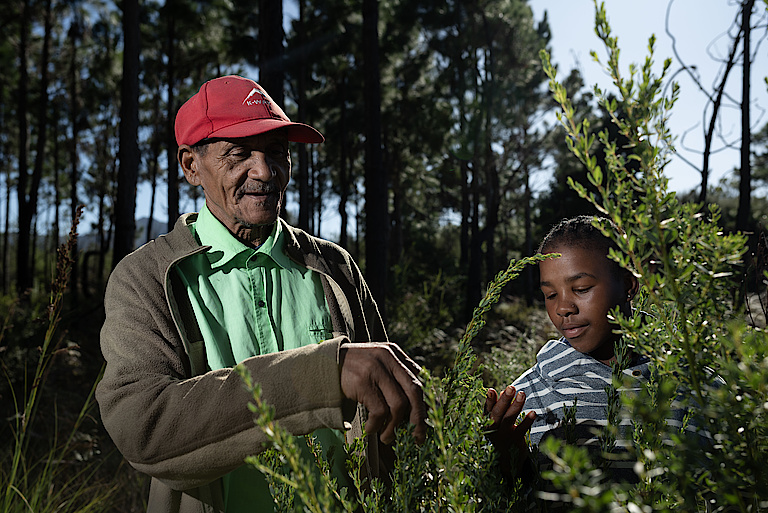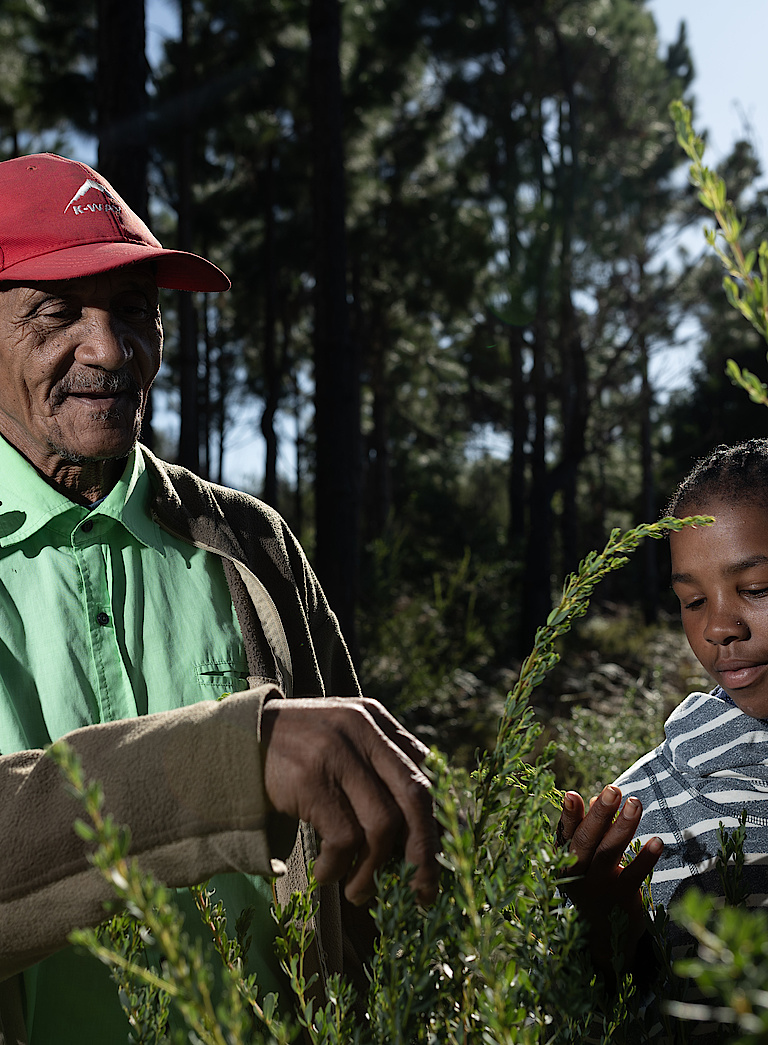During the ABioSA Community Engagement Pilot Project, we discovered the deep wisdom and Traditional Knowledge residing amongst local community members and different people working within the Honeybush industry. To unearth this knowledge and appreciate the related bio-cultural intelligence requires an immersive process of discovery.
We use the words intelligence and wisdom in specific ways. Intelligence speaks to the functional contribution people bring as they share their experience and perspectives. Wisdom highlights what emerges as people embody qualities of stewardship in relation to others in the local community, the industry and the Honeybush species generally.
When we meet each other in this way, we begin to show up and contribute in ways that spark a creative responsiveness to the challenges of earning a living whilst embodying our role as caretakers of the biological diversity upon which all of life depends.
We found inspiration from wisdom keepers of biocultural intelligence. The photograph shows Edward Benade, a well-respected wild harvester, as he shares is wisdom with his granddaughter.
A young women embodied stewardship for the Honeybush plant that inspired everyone involved in this pilot project and beyond. She sings to the saplings as she tends to them in the Honeybush nursery where she works. Her choice of song also carries enormous power and inspiration for her and all of us…
Bio-cultural intelligence (eco-cultural) as we relate to it, refers to the interdependent functioning between human beings and human beings and the natural environment. To inquire into this is an invitation to explore the different facets and connections between our heritage, the land, forms of knowledge, community life and work life in ways that nurtures, protects and sustains life.

To encounter and bring forth this tremendous knowledge asks for a particular way of engaging each other as an Industry-Wide Community.
We have described what this form of community engagement could look like in the orientation booklet:
